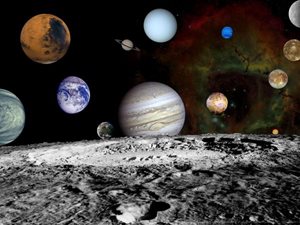Playing is Learning
The Ringed Planets of the Solar System
January 5th, 2015
| Ads | ||
|
Play the Challenge
|
||
|
A New Word is Coined A new Character is revealed A new Game is Afoot |
An Edutainment Adventure Based on Three Rounds of Investigations
|
|
|
Welcome to the World of PROFESsee™by seeCOSM™ PROFESsee™ is my title. I am the perpetual learner, in pursuit of knowledge, wisdom and truth. I derived my name from professor |
 |
|
|
Smaller and darker, Neptune, Uranus’ rings eluded discovery until much later. Jupiter is big, but her rings are faint. However, it is now thought that 4 of the planets have rings. However, who can really tell? The only rings that we can affirm are those seen with our technology. Beyond that, we don’t know and the universe is really vast. Although there is a lot of confusion and controversy over the exact number of planets in our Solar System, the agreement is that there are only 4 ringed planets which also happen to be the giant gas planets: Jupiter, Saturn, Uranus and Neptune. Saturn, which has been the longest known to bear rings, has the largest ring system divided into 5 segments within which lies thousands of tiny rings. With ice being the major composition of the rings, they have many gaps, two of which result from moons engrafted in them. The Uranus rings, discovered in 1977, comprise 13 separate rings majorly made up of water ice, dust and other atomic particles. Jupiter, although the largest planet, was the third to be discovered bearing rings, thanks to the faint nature of its rings which make them very difficult to see. The Jupiter system of rings has 3 main sections: the halo, the main ring and the outer section having 2 rings. Neptune was the last planet to be discovered having rings and this was not until almost just 20 years ago. It has 5 separate rings and holds the record for being the only planet having rings named after people; all of whom were famous astronomers. The rings are colored red and mainly comprise a lot of dust and ice alongside other particles. Although Jupiter, Saturn and Neptune have fainter smaller rings, planetary rings are thought to be transient in nature, meaning the visibility of the rings becomes dependent on geographical location and our presence in time. Can you find the other planets with rings? Image courtesy of: http://science.nationalgeographic.com/science/photos/solar-system-gallery/ |
||
Latest News / Events
E-mail [email protected]
The Professee™ Newsletter Beta
http://www.seecosm.com/
http://www.seecosm.com/

